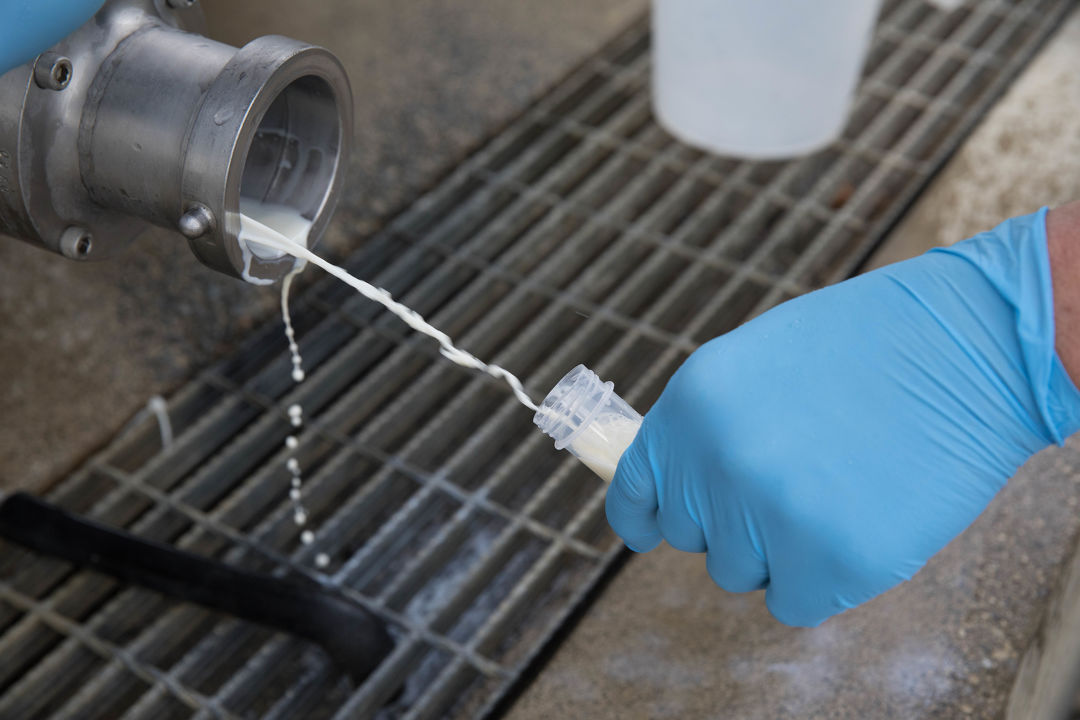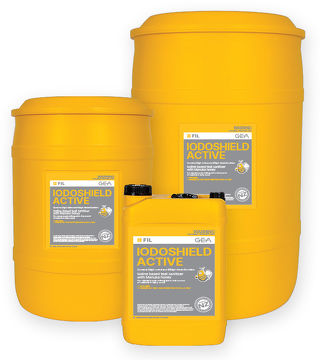Jess Hardegger - Southland
Case Study: Jess Hardegger - How to keep your herd clean and clear
Back in 2018, Jess Hardegger had 27 clinical mastitis cases present in just 17 days through the January dry period, the somatic cell count jumped from 70-80,000 to 230-240,000 simultaneously.

In 2018 Jess Hardegger had 27 clinical mastitis cases present in just 17 days through the January dry period, the somatic cell count jumped from 70-80,000 to 230-240,000 simultaneously.
She contacted FIL’s Area Manager Mike Robinson who recommended a bulk milk sample test. Once the results were established to understand the causes of the outbreak, a few simple changes were implemented on farm. By the end of March, the herd was again clean and clear.
Jess manages a herd of 444 cows on 150ha effective near Otautau. The milking system encompasses an automatic teat spray system and computerised herd management which tracks cow performance and conductivity.
“We thought we practiced good hygiene and herd management” says Jess. “The sudden increase in clinical mastitis, with no response to treatment, was a big concern.
“On contacting Mike at FIL, he suggested we do a bulk milk sample test immediately. This was to give us a clear overview of what pathogens we were dealing with, and some strategic advice, so we could act accordingly.”
A test developed by Farm Medix and delivered on farm by FIL's team, the bulk tank test helps determine exactly what bacteria are present in the milk and whether they are coming from the cows or is hygiene-related.
The results showed there was mainly Coagulase negative Staphylococci (CNS) present, with some Strep uberis (Strep) and Staph aureus.
“The results were a relief, because CNS is hygiene-related and relatively easy to fix” says Jess. Further testing with the Farm Medix Check-Up mastitis diagnostic tool revealed one cow with Staph aureus. She was segregated, while those with Strep were successfully treated.
Mike also assessed the team’s milking and cleaning routines, recommending the following changes:
1. Hose the yard and feed pads after every milking.
Mid-drought, the team was trying to save water and only hosing down the feed pads on either side of the yard every 2-3 days.
“Mike recommended we hose the feed pads every morning, but also to take care that the cows were well clear of the yard when hosing down.
Otherwise dirty water could splash onto the udders, entering open teat canals (straight after milking) and contribute to infection.”
2. Wear clean gloves every milking.
Where the team wore gloves to deal with treatment cows, they milked mostly with bare hands. “We didn’t realise how much bacteria we were spreading with our hands” Jess explains.
“Now we wear gloves all the time, clean our hands with iodine after stripping a cow, and we’ve even added extra methylated spirit to our wipes.”
3. Switch teat spray from Chlorhexidine to FIL Iodoshield Active.
An iodine-based teat spray works better in feed pad situations. Made with Manuka honey and emollient, Iodoshield Active also aids in conditioning teats and preventing mastitis.
4. Calibrate the automatic teat spray system.
“Every step we’ve taken in this process has made perfect sense” Jess concludes. “I feel that we have been able to get on top of the mastitis issue very quickly with more knowledge and better practice. We’ve only seen a couple of infections since, and our cell count is reducing back down to 80,000 as of last pick up.
“Furthermore, we treat for the identified pathogen - blanket treatment is a thing of the past.”
Keep mastitis in check with the right tools and good practical advice. Contact your local FIL Area Manager to find out more.





